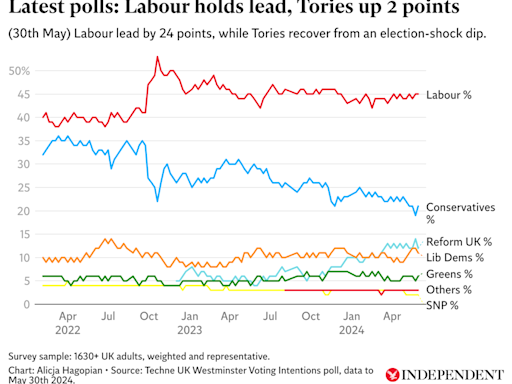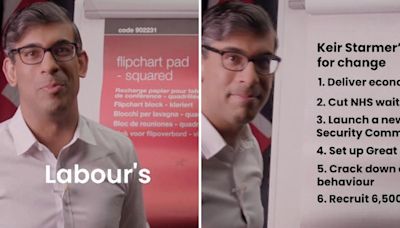Search results
People also ask
What was the British Labour Party?
Is Labour a political party?
Where did the Labour Party come from?
When was the first Labour government formed?
The Labour Party is a political party in the United Kingdom that has been described as an alliance of social democrats, democratic socialists, and trade unionists. The Labour Party sits on the centre-left of the political spectrum.
2 days ago · Labour Party, British political party whose historic links with trade unions have led it to promote an active role for the state in the creation of economic prosperity and in the provision of social services. It has been the major democratic socialist party in Britain since the early 20th century.
The Labour Party's origins lie in the growth of the urban proletariat in the late 19th century and the extension of the franchise to working-class males, when it became apparent that there was a need for a political party to represent the interests and needs of those groups.
- Overview
- History
political party, United Kingdom
Also known as: Labour Representation Committee
Written byPaul David Webb
Paul David Webb
Chair, British and Comparative Politics, University of Sussex, Brighton, England. Author of The Modern British Party System and Trade Unions and the British Electorate. Associate and Reviews Editor of Party Politics.
Fact-checked byThe Editors of Encyclopaedia Britannica
The Labour Party was born at the turn of the 20th century out of the frustration of working-class people at their inability to field parliamentary candidates through the Liberal Party, which at that time was the dominant social-reform party in Britain. In 1900 the Trades Union Congress (the national federation of British trade unions) cooperated with the Independent Labour Party (founded in 1893) to establish a Labour Representation Committee, which took the name Labour Party in 1906. The early Labour Party lacked a nationwide mass membership or organization; up to 1914 it made progress chiefly through an informal agreement with the Liberals not to run candidates against each other wherever possible. After World War I the party made great strides, owing to a number of factors: first, the Liberal Party tore itself apart in a series of factional disputes; second, the 1918 Representation of the People Act extended the electoral franchise to all males aged 21 or older and to women aged 30 or older; and third, in 1918 Labour reconstituted itself as a formally socialist party with a democratic constitution and a national structure. The party’s new program, “Labour and the New Social Order,” drafted by Fabian Society leaders Sidney and Beatrice Webb, committed Labour to the pursuit of full employment with a minimum wage and a maximum workweek, democratic control and public ownership of industry, progressive taxation, and the expansion of educational and social services. By 1922 Labour had supplanted the Liberal Party as the official opposition to the ruling Conservative Party.
In 1924, with Liberal support, James Ramsay MacDonald formed the first Labour government, though his minority administration was brought down less than one year later over questions of its sympathy for the new Soviet state and over alleged communist influence within the party. Labour emerged from the 1929 election as the largest party in Parliament, though again it lacked an overall majority and had to form a coalition government with the Liberals. In 1931 the party suffered one of the severest crises in its history when, faced with demands to cut public expenditure as a condition for receiving loans from foreign banks, MacDonald defied the objections of most Labour officials and formed a coalition government with Conservatives and Liberals. In the ensuing election Labour’s parliamentary representation was reduced from 288 to 52. The party remained out of power until 1940, when Labour ministers joined a wartime coalition government under Winston Churchill.
Encyclopædia Britannica, Inc.
Labour achieved a spectacular recovery in the general election of 1945, when it won 393 seats and a comfortable 146-seat overall majority in the House of Commons. Most commentators have attributed this victory to the electorate’s overwhelming desire for social reform and its determination to avoid a return to the interwar era of economic depression and unemployment. Under the leadership of Prime Minister Clement Attlee, the Labour governments of the following six years built on the state’s recent experience of wartime intervention to construct a postwar political consensus based on a mixed economy, a much more extensive system of social welfare (including a National Health Service), and a commitment to the pursuit of full employment. Postwar economic recovery proved slow, however, and in the 1950 election Labour’s majority was reduced to five. In 1951 it lost power to the Conservatives.
Encyclopædia Britannica, Inc.
Throughout the 1950s the question of whether, and how, to adapt the party’s traditional socialist approach to an affluent society—especially the question of the nationalization of industry—divided Labour’s ranks. “Bevanites” (followers of former health minister Aneurin Bevan) wanted a more socialist economic policy and less dependence on the United States; the “revisionists,” led by Hugh Gaitskell, Attlee’s successor as party leader, wished to drop the commitment to the nationalization of industry. Labour did not regain power until 1964 under Harold Wilson, who was prime minister until 1970. Wilson attempted to resolve the problem of Britain’s relative economic decline by pursuing a strategy of technocratic reform, corporatist relations with business and labour leaders, and a system of “indicative” economic planning, in which the government attempted to facilitate economic development in directions of predicted growth. The party held power again from 1974 to 1979, first under Wilson and then under James Callaghan. Labour’s narrow five-seat majority in the election of October 1974 diminished through the term, forcing the party to enter a “Lib-Lab” pact with the Liberal Party. Although hampered by a small majority, the Labour Party pursued controversial policies, including support for Britain’s continued membership in the European Community and devolution in Scotland and Wales, which was rejected by referenda in 1979. Ultimately, the moderate social-democratic approach exemplified by the Wilson-Callaghan years foundered on the twin rocks of Britain’s chronic economic problems and Labour’s worsening relations with its trade union allies.
Join Labour. Labour is made up of hundreds of thousands of members, coming together to get Britain’s future back. By joining, you can get involved with your local party, campaign with us on the issues you care about and make sure your voice is heard. I want to join.
The Labour Party was created in 1900: a new party for a new century. Its formation was the result of many years of struggle by working class people, trade unionists and socialists, united by the goal of working class voices represented in British Parliament.
Apr 6, 2020 · A brief history of the Labour Party. When was Britain’s Labour Party first established, who was the first Labour prime minister, and what exactly was the ‘third way’? As Sir Keir Starmer is elected as the new party leader, historian Dr Jeremy Nuttall explores the history of the Labour Party and considers what its future may hold…



